$100 Website Offer
Get your personal website + domain for just $100.
Limited Time Offer!
Claim Your Website Now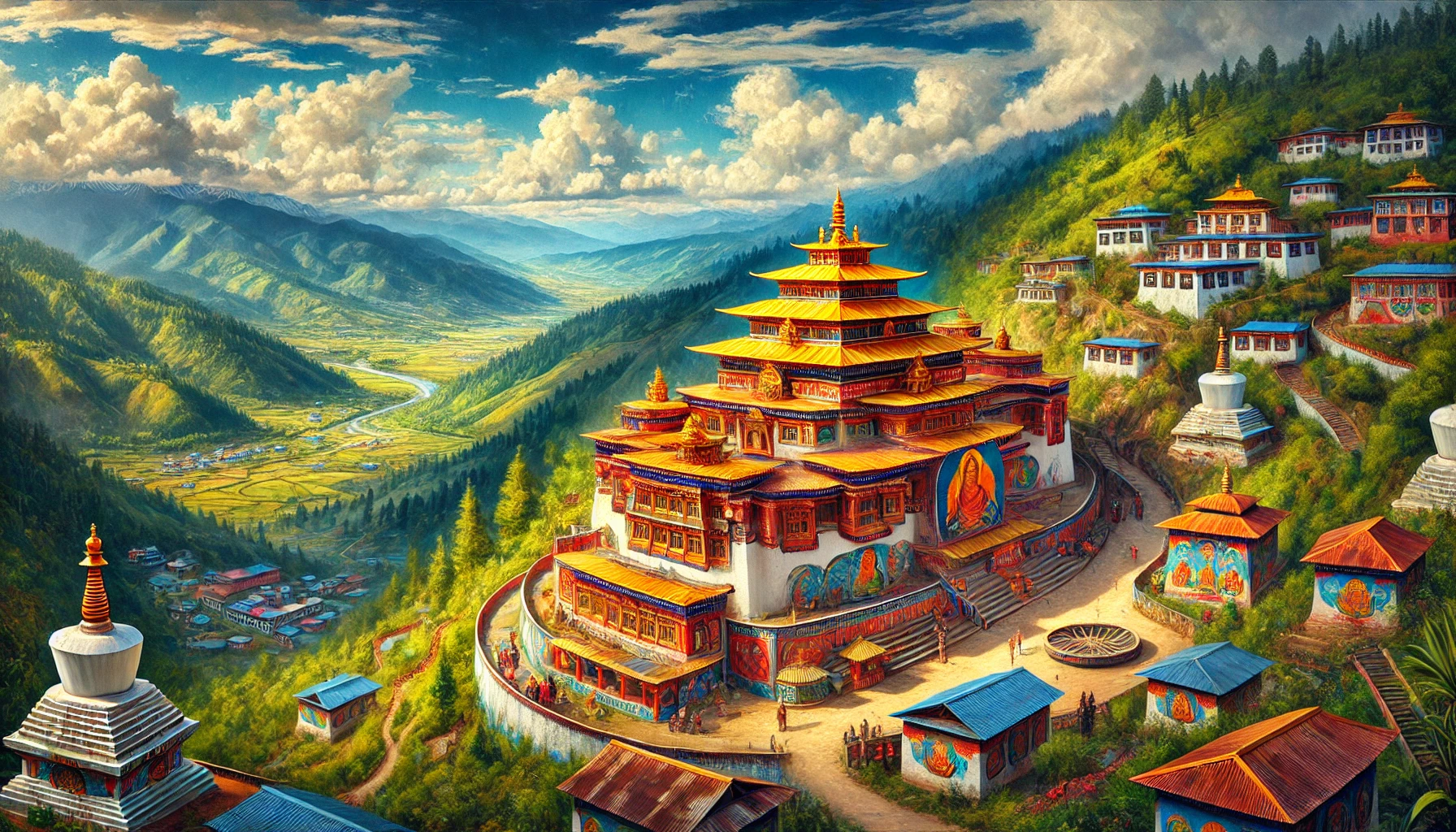
Introduction to Tawang
Brief History and Cultural Significance
Tawang, located in the northwestern part of Arunachal Pradesh, India, is a place of profound spiritual and historical significance. It is famed for housing the second largest monastery in the world, the Tawang Monastery, which was established in the 17th century by Merak Lama Lodre Gyatso according to the wishes of the 5th Dalai Lama. The monastery is a major holy site for Tibetan Buddhists and plays a crucial role in the spiritual life of the Monpa tribe.
The region has a storied past that intertwines with the mythology and history of Tibetan Buddhism. It is said to be part of the hidden land of ‘Beyul’ described in Tibetan Buddhist texts. Tawang also played a significant role during the Sino-Indian War in 1962, and the Tawang War Memorial commemorates the bravery of the Indian soldiers who defended the territory.
Geographic Setting and Climate
Tawang is nestled in the Gudpi and Chong Chugmi ranges and bathed by the waters of the Tawang Chu river. It is located at an elevation of about 3,048 meters (10,000 feet) above sea level, which makes it both a challenge and a delight for travelers. The town is surrounded by rugged mountains and offers picturesque views of the Eastern Himalayas.
The climate in Tawang is alpine. Summers (March to June) are short and mild, while winters (November to February) are long and harsh, with snowfall being a common occurrence. Monsoon season (July to September) brings heavy rains and can make travel challenging due to landslides and slippery roads. The best time to visit Tawang is from April to June and from September to October, when the weather is generally clear and conducive to exploring the outdoor beauty and cultural landmarks of the region.
This setting not only provides a breathtaking backdrop but also plays a critical role in the daily lives and cultural practices of the local Monpa people, further enriching the visitor’s experience with its unique landscape and climatic conditions.
Travel Essentials
Here’s a detailed table for the Travel Essentials section of your Tawang guide:
| Category | Details |
|---|---|
| How to Get There | – By Air: The nearest airport is Tezpur Airport in Assam, about 317 km away. From there, you can hire a taxi or catch a bus to Tawang. |
| – By Road: Tawang is accessible by road from Tezpur and Guwahati. The journey is scenic but can be challenging, especially during monsoon and winter. | |
| – By Rail: The nearest railway station is at Rangapara, Assam, about 383 km away. From there, road transportation is available to Tawang. | |
| Permits Required | – All visitors need a special Inner Line Permit (ILP) for Arunachal Pradesh. You can apply online or get it from Arunachal Pradesh government offices in major cities like Guwahati, Tezpur, or New Delhi. |
| Best Times to Visit | – April to June: Warm weather, clear skies. Ideal for sightseeing and outdoor activities. |
| – September to October: Post-monsoon clarity and pre-winter freshness, suitable for visiting monasteries and outdoor exploration. | |
| Local Transportation | – Local Taxis: Available for hire for full-day sightseeing. Negotiate rates beforehand. |
| – Shared Taxis and Jeeps: Economical option for budget travelers, frequently ply between major points. | |
| – Rental Bikes: For the adventurous, rental bikes are available at various points, allowing for a personalized exploration at your own pace. |
Accommodation
Here’s a detailed overview of accommodation options in Tawang, categorized by budget and tailored for different types of travelers:
| Budget Level | Accommodation Type | Recommendations | Ideal For |
|---|---|---|---|
| Luxury | Hotels | Hotel Tawang Holiday | Families, couples |
| The Regency | Business travelers, luxury seekers | ||
| Mid-Range | Guesthouses | Dolma Khangsar Guest House | Solo travelers, small groups |
| Monyul Lodge | Cultural enthusiasts, families | ||
| Budget | Homestays | Zambhala Homestay | Budget solo travelers |
| Hostels | Tawang Backpackers Hostel | Backpackers, young travelers |
Recommendations for Specific Needs:
- Family-Friendly Stays: Hotel Tawang Holiday offers spacious rooms and is close to major attractions, making it convenient for families traveling with children. Additionally, Monyul Lodge provides a comfortable setting and often organizes cultural evenings that are fun for all ages.
- Romantic Stays: The Regency is known for its stunning views of the surrounding mountains and offers a quiet, intimate atmosphere for couples. Its amenities include private balconies, upscale dining, and personalized services.
- Budget Stays: Zambhala Homestay and Tawang Backpackers Hostel are great for travelers looking to save money. These places offer basic but clean accommodations with opportunities to interact with other travelers. Homestays like Zambhala provide a closer look at the local lifestyle, which can enrich your travel experience.
Top Attractions in Tawang
1. Tawang Monastery
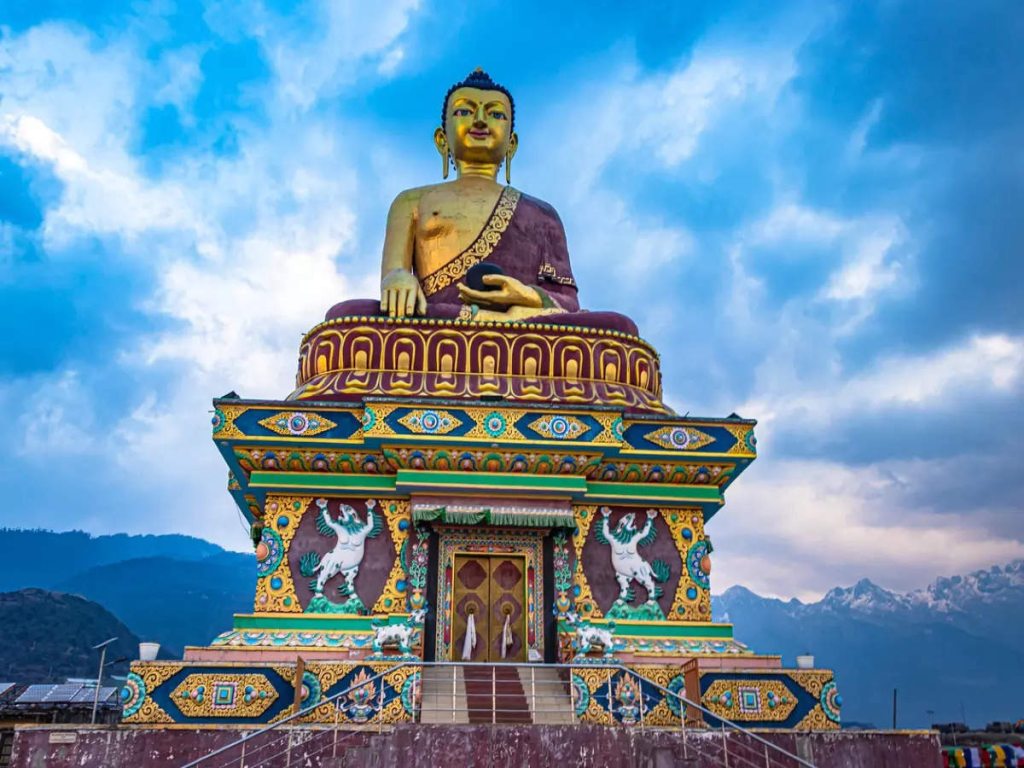
- Description: Known as the largest monastery in India and the second largest in the world, Tawang Monastery is a significant cultural and spiritual site. It houses over 300 monks and features stunning 18th-century architecture. The monastery includes a massive gilded Buddha statue and an extensive library of sacred Buddhist texts.
- Visitor Tips: Attend the morning prayers for a serene experience; the view at sunrise is particularly breathtaking.
2. Tawang War Memorial

- Description: This memorial is dedicated to the soldiers of the Indian Army who lost their lives in the 1962 Sino-Indian War. Located at a commanding position with sweeping views of Tawang Valley, it’s a poignant reminder of bravery and sacrifice.
- Visitor Tips: Visit during the evening light and sound show, which recounts the tales of heroism of the Indian soldiers through engaging narratives.
Lesser-Known Local Spots Worth Exploring
1. Bap Teng Kang Waterfall

- Description: Located approximately 80 km from Tawang town, this 100-foot waterfall is a refreshing retreat in nature. The area surrounding the waterfall is ideal for picnics and leisurely hikes.
- Visitor Tips: The best time to visit is during the monsoon season when the waterfall is at its most vigorous.
2. Urgelling Monastery
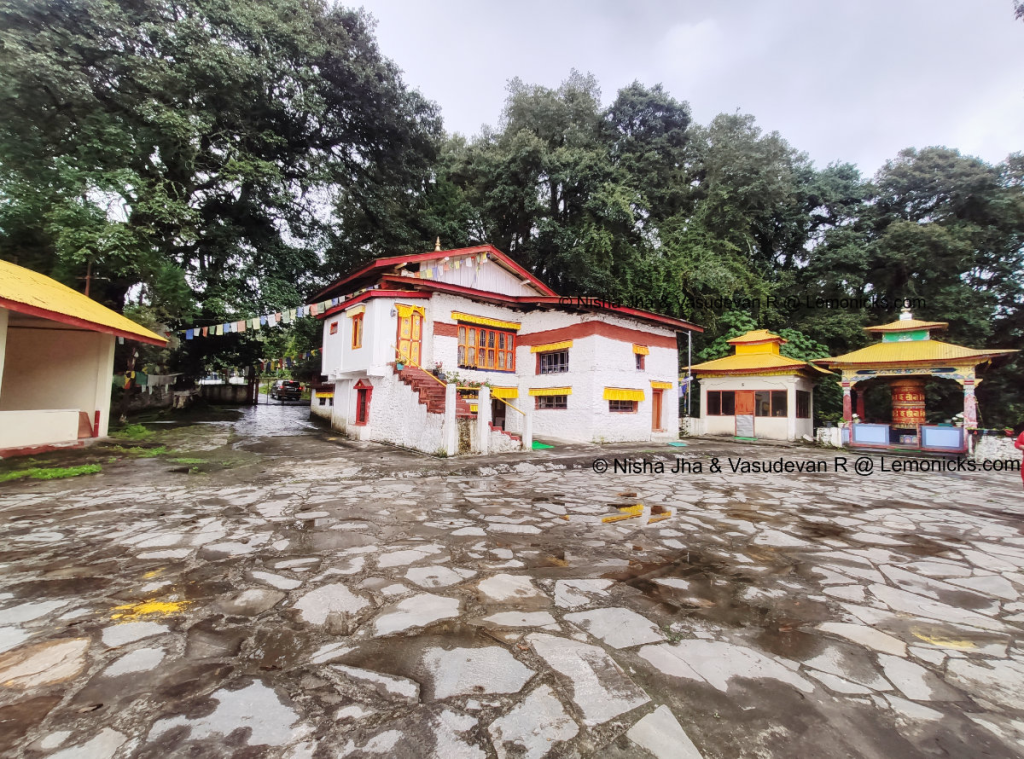
- Description: This lesser-known monastery is historically significant as the birthplace of the 6th Dalai Lama, Tsangyang Gyatso. Unlike the grander monasteries in the region, Urgelling offers a peaceful and introspective visit.
- Visitor Tips: Dive into the small museum inside the monastery to learn about the life of the 6th Dalai Lama and the monastery’s history.
3. Zemithang
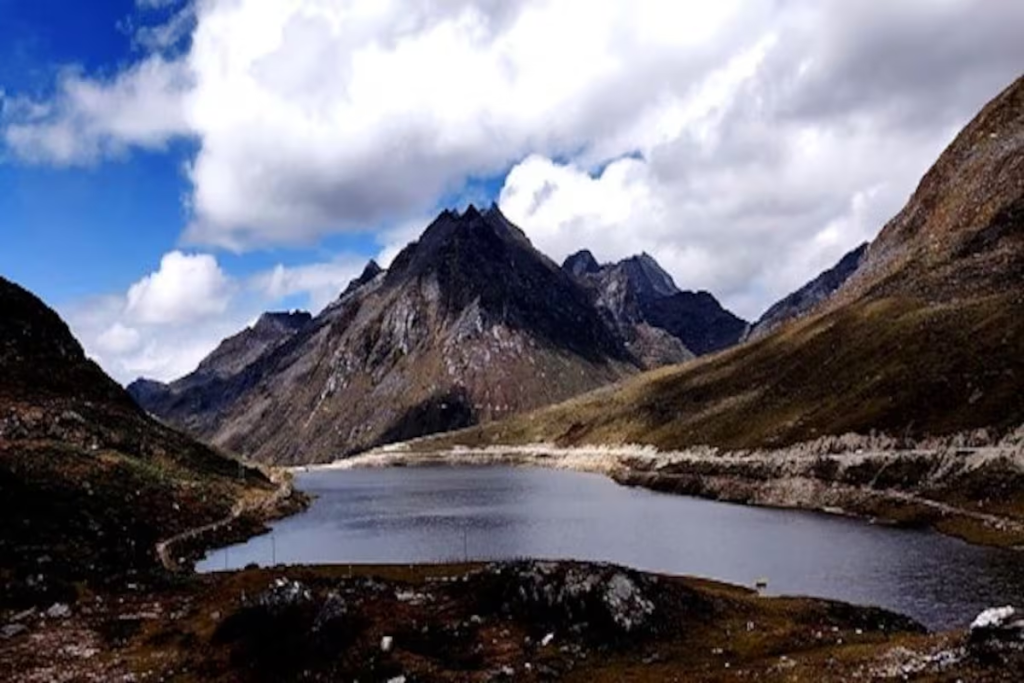
- Description: A remote village in the north of Tawang, Zemithang is known for its pristine beauty and the ancient Gorsam Chorten. The village provides a glimpse into the pastoral life of the Monpa tribe and their timeless traditions.
- Visitor Tips: Stay overnight to experience the clear night skies. The area is also a starting point for several treks.
4. Nuranang Falls
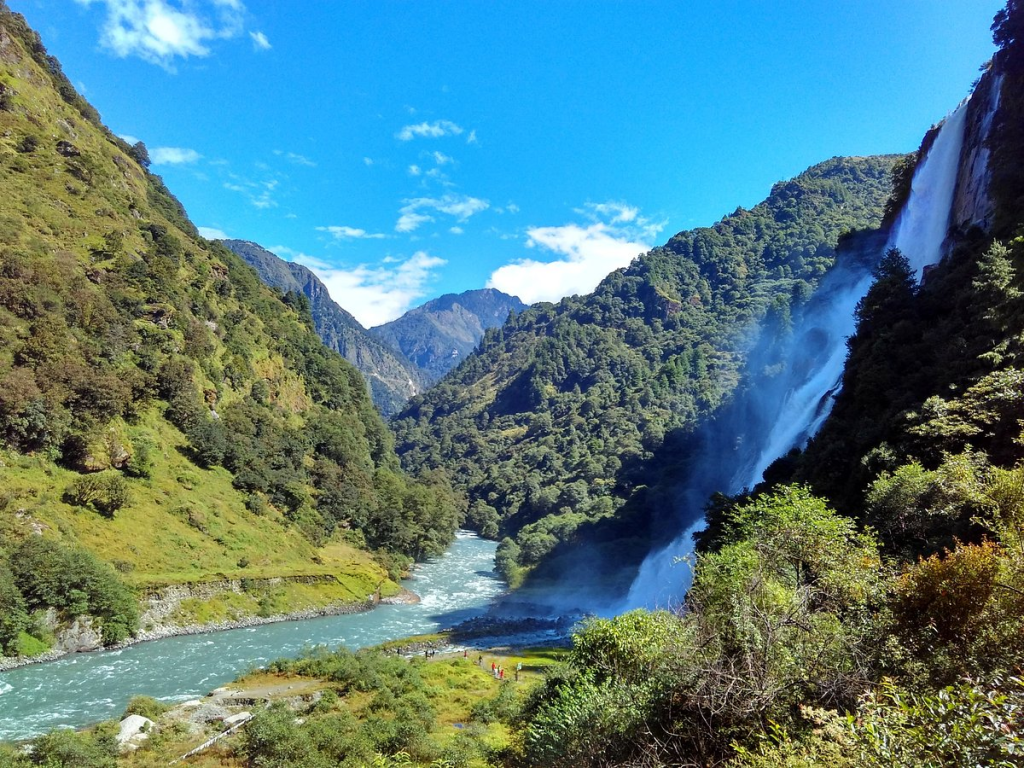
- Description: Also known as Jung Falls, Nuranang is one of the most stunning waterfalls in Arunachal Pradesh. It plunges from a height of about 100 meters and is a hidden gem not frequented by the usual tourist paths.
- Visitor Tips: There’s a small hydropower plant near the base of the falls, which contributes to the local grid. The best views are from the base, so be prepared for a short hike down.
Activities in Tawang
Trekking Routes and Adventure Sports
- Gorichen Peak Trek

- Description: Gorichen Peak is the highest peak in Arunachal Pradesh, standing at over 6,500 meters. It’s a challenging trek suited for experienced trekkers, offering exhilarating views and a thrilling adventure.
- Duration: Approximately 7-10 days
- Best Time: April to June and September to October
2. Bum La Pass

- Description: Located at about 5,000 meters above sea level near the Indo-China border, Bum La Pass offers a scenic trek and is historically significant. The area requires special permits, but the views and the sense of adventure are well worth the preparation.
- Duration: Day trip from Tawang
- Best Time: May to October, as it is often closed during winter due to heavy snowfall.
3. Adventure Sports

- Activities: Besides trekking, Tawang offers opportunities for mountain biking and rock climbing, especially around the Sela Pass which provides rugged terrains and breathtaking landscapes.
Cultural Experiences
- Monastery Visits
- Major Monasteries: Besides Tawang Monastery, visit the smaller but equally intriguing Khinmey and Urgelling monasteries to observe daily rituals and interact with monks.
- Experience: Participate in meditation sessions or attend philosophical teachings to deepen your understanding of Buddhist practices.
2. Local Festivals
- Losar Festival: Celebrated in February or March, this Tibetan New Year festival is marked by colorful decorations, traditional performances, and ceremonial offerings.
- Torgya Festival: Held in the Tawang Monastery in January, this three-day festival features ritual dances (Cham) performed by the monks to ward off evil spirits and bring prosperity.
3. Cultural Night in Tawang
- Description: Regular cultural nights offer tourists a glimpse into the rich traditions of the Monpa people through music, dance, and traditional crafts.
- Location: These are often organized at major hotels or can be attended at the Tawang Cultural Hall.
Local Cuisine
Here’s a detailed table outlining must-try dishes and beverages in Tawang, along with recommended restaurants and local eateries:
| Dish/Beverage | Description | Where to Try |
|---|---|---|
| Thukpa | A hearty noodle soup made with vegetables and meat, often seasoned with local spices. | The Dragon Restaurant |
| Momos | Tibetan-style dumplings filled with meat or vegetables, steamed or fried. | Orange Restaurant & Lounge |
| Zan | A traditional Monpa porridge made from millet, mixed with fermented cheese and other seasonings. | Taste of Tawang |
| Gyapa Khazi | A local version of fried rice mixed with fermented cheese, vegetables, and sometimes shrimp. | Snow Lion Restaurant |
| Butter Tea | A salty tea mixed with butter, an essential in the cold climate of Tawang. | Various local tea shops |
| Chhang | A mild alcoholic beverage made from barley, a staple in local celebrations. | Local homestays and eateries |
Recommended Restaurants and Local Eateries
| Restaurant/Eatery | Specialties | Location/Notes |
|---|---|---|
| The Dragon Restaurant | Known for authentic Tibetan and local Arunachal cuisines. | Near Old Market, central Tawang. Offers a cozy ambiance. |
| Orange Restaurant & Lounge | Offers a mix of local and continental dishes, great momos. | Located in the heart of Tawang, known for its vibrant atmosphere. |
| Taste of Tawang | Best for trying traditional Monpa dishes like Zan. | Family-run, provides a traditional dining experience. |
| Snow Lion Restaurant | Known for its Gyapa Khazi and other Tibetan dishes. | Popular among tourists, located near Tawang Monastery. |
Shopping in Tawang
Local Crafts and Souvenirs to Look Out For:
- Monpa Handicrafts: The Monpa tribe is known for its exquisite handwoven textiles, including carpets and shawls with intricate patterns that reflect their rich heritage.
- Buddhist Relics: Thangkas (Tibetan Buddhist paintings on cotton or silk), prayer wheels, and prayer flags are popular among visitors seeking spiritual souvenirs.
- Wooden Masks: These are used in local festivals and can be a unique decorative item for homes.
- Bamboo Crafts: Items such as baskets, utensils, and containers made from bamboo are not only eco-friendly but also beautifully crafted.
- Metal Work: Includes traditional knives and other metal artifacts that showcase the craftsmanship of local artisans.
- Saffron: Known locally as ‘Kesar’, it’s a high-value product cultivated in areas around Tawang and makes for a precious gift.
Best Places to Shop in Tawang:
| Shopping Location | Specialties | Additional Information |
|---|---|---|
| Old Market | General handicrafts, clothes, and local food. | The bustling heart of Tawang, where you can find almost everything. |
| Vio Market | Souvenirs and religious items. | A quieter market, known for its religious and spiritual items. |
| Tawang Craft Centre | Authentic Monpa textiles and handicrafts. | Government-run; ensures quality and supports local artisans. |
| Nehru Market | Wide variety of local crafts. | Known for its variety and bargaining opportunities. |
Cultural Insights for Tawang
Here’s a table detailing cultural insights and how to respect and engage with local culture in Tawang:
| Aspect | Insights into Local Customs and Traditions | How to Respect and Engage with Local Culture |
|---|---|---|
| Religious Practices | Buddhism plays a central role. Monasteries are community hubs. | Dress modestly, especially in religious places. Remove shoes before entering sacred areas. |
| Festivals | Major festivals include Losar and Torgya, featuring religious ceremonies, dances, and communal meals. | Participate respectfully; seek permission before capturing photos or engaging in ceremonies. |
| Traditional Dress | Men wear ‘chupa’, and women wear ‘shingka’ during festivals and important occasions. | Appreciate the traditional attire; you might be invited to wear them during festivals as a part of cultural immersion. |
| Hospitality | Known for their warmth, accepting tea or food when offered is seen as a sign of respect. | Always accept hospitality with gratitude. Engage in friendly interactions to show appreciation for their generosity. |
| Crafts | Art forms like Thangka painting, wood carving, and weaving are significant, reflecting religious and natural themes. | Support local artisans by purchasing authentic handmade items directly from them. |
| Language | The local dialect is Monpa. Knowing basic phrases is highly appreciated. | Learn simple greetings and phrases. This shows your interest in their culture and can open up more meaningful exchanges. |
| Environmental Conservation | Tawang’s natural beauty is integral to its culture. | Follow eco-friendly practices; avoid littering and participate in sustainable tourism practices to protect their environment. |
| Cultural Exchange | Sharing about your own culture can be enriching when locals show interest. | Engage openly in cultural exchanges where appropriate, sharing aspects of your own culture and learning about theirs. |
Practical Information
Here’s a detailed table that provides practical information for visitors to Tawang, covering language tips, safety and health considerations, and currency and payment options:
| Category | Details |
|---|---|
| Language Tips | – Primary Languages: Monpa, Tibetan, and Hindi. English is understood in tourist areas. |
| – Useful Phrases: Learn basic greetings in Monpa or Tibetan. For example, “Tashi Delek” (hello), “Thuk Ji Che” (thank you). | |
| Safety Considerations | – Altitude Sickness: Tawang is at high altitude. Acclimatize properly, stay hydrated, and consider medication if prone to altitude sickness. |
| – Road Safety: Road conditions can be challenging, especially in monsoon and winter. Drive carefully or prefer experienced local drivers. | |
| – Emergency Contacts: Always have local emergency numbers and the contact of your accommodation. | |
| Health Considerations | – Medical Facilities: Limited in Tawang. Carry necessary medications and first-aid. Major treatments require transfer to larger cities. |
| – Preventive Measures: Prepare for cold weather and prevent hypothermia. Use sunscreen for strong UV rays at high altitudes. | |
| Currency and Payment | – Currency Used: Indian Rupee (INR). |
| – Cash is King: Many places in Tawang prefer cash. ATMs can be scarce outside urban centers, so carry sufficient cash. | |
| – Card Usage: Credit/debit cards are accepted at major hotels and some shops, but check beforehand. | |
| – ATM Tips: Withdraw cash in larger towns before arriving in Tawang. Inform your bank of travel plans to avoid card blocks for unusual transactions. |
Itineraries
Here’s a detailed table with suggested itineraries for Tawang, catering to different durations of stay, along with tips for combining visits to attractions efficiently:
| Duration | Itinerary | Efficiency Tips |
|---|---|---|
| 3 Days | Day 1: Visit Tawang Monastery, Urgelling Monastery. | Start early to spend ample time at each location. Monasteries are close by, minimizing travel time. |
| Day 2: Explore Tawang War Memorial and Craft Centre. | Combine nearby attractions to save time. Afternoon or evening visits to the War Memorial are ideal for the light show. | |
| Day 3: Day trip to Bum La Pass. | Check permit requirements in advance and arrange transport early to maximize your day at Bum La Pass. | |
| 5 Days | Day 1: Visit Tawang Monastery, Urgelling Monastery. | Similar to the 3-day plan, start early to take full advantage of the day exploring monasteries. |
| Day 2: Explore Tawang War Memorial, Craft Centre, and local markets. | Combine central Tawang attractions in a single day to reduce backtracking. | |
| Day 3: Day trip to Bum La Pass. | As with the 3-day itinerary, prepare permits and transport in advance. | |
| Day 4: Visit Nuranang Falls in the morning, Zemithang in the afternoon. | Schedule travel to distant locations like Zemithang with stops at natural attractions like Nuranang Falls along the way. | |
| Day 5: Local cultural experience day, participate in a monastery event or festival if possible. | Plan around local cultural events for an authentic experience; check festival dates prior to your visit. |
Additional Tips for Combining Visits Efficiently:
- Cluster Visits: Plan your itinerary by location clustering; visit attractions that are close to each other on the same day to minimize travel time.
- Early Starts: Many cultural sites, especially monasteries, are best experienced in the early morning. This also helps avoid crowds.
- Check Local Conditions: Road conditions can change, especially during monsoon season, so adjust your plans based on the latest travel advisories.
- Hire Local Guides: Local guides not only provide insights into the cultural significance of the sites but can also help in navigating the best routes and managing time effectively.
Traveler’s Tips
Here’s a table that provides practical traveler’s tips and advice on what to pack for a trip to Tawang:
| Category | Details |
|---|---|
| Traveler’s Tips | – Acclimatize: Spend a day or two acclimatizing to the altitude in lower regions like Tezpur or Bomdila. |
| – Local Guides: Hiring local guides not only supports the local economy but also enriches your understanding of the cultural and historical contexts. | |
| – Respect Local Customs: Always ask permission before taking photos of people or religious sites. | |
| – Network Connectivity: Mobile networks can be unreliable. Inform family of your itinerary and check-in regularly via available networks. | |
| – Cash Management: Withdraw enough cash in larger towns, as ATMs in Tawang may not always be functional or replenished. | |
| What to Pack | – Warm Clothing: Even in summer, nights can be chilly. Include layers like fleece jackets, thermals, and a windproof jacket. |
| – Rain Gear: A waterproof jacket and umbrella are essential, especially from July to September. | |
| – Sun Protection: High-altitude UV levels can be harsh. Pack sunscreen, sunglasses, and a wide-brimmed hat. | |
| – Medication: Include altitude sickness medication, any regular medications, and a basic first-aid kit. | |
| – Comfortable Footwear: Durable, waterproof hiking boots for trekking and comfortable shoes for walking around towns. | |
| – Snacks and Water Bottle: Reusable water bottle and energy-rich snacks like nuts and energy bars for long drives or treks. | |
| – Documents and Copies: Carry originals and copies of important documents like permits, ID proof, and travel insurance. |
Best Photography Spots in Tawang
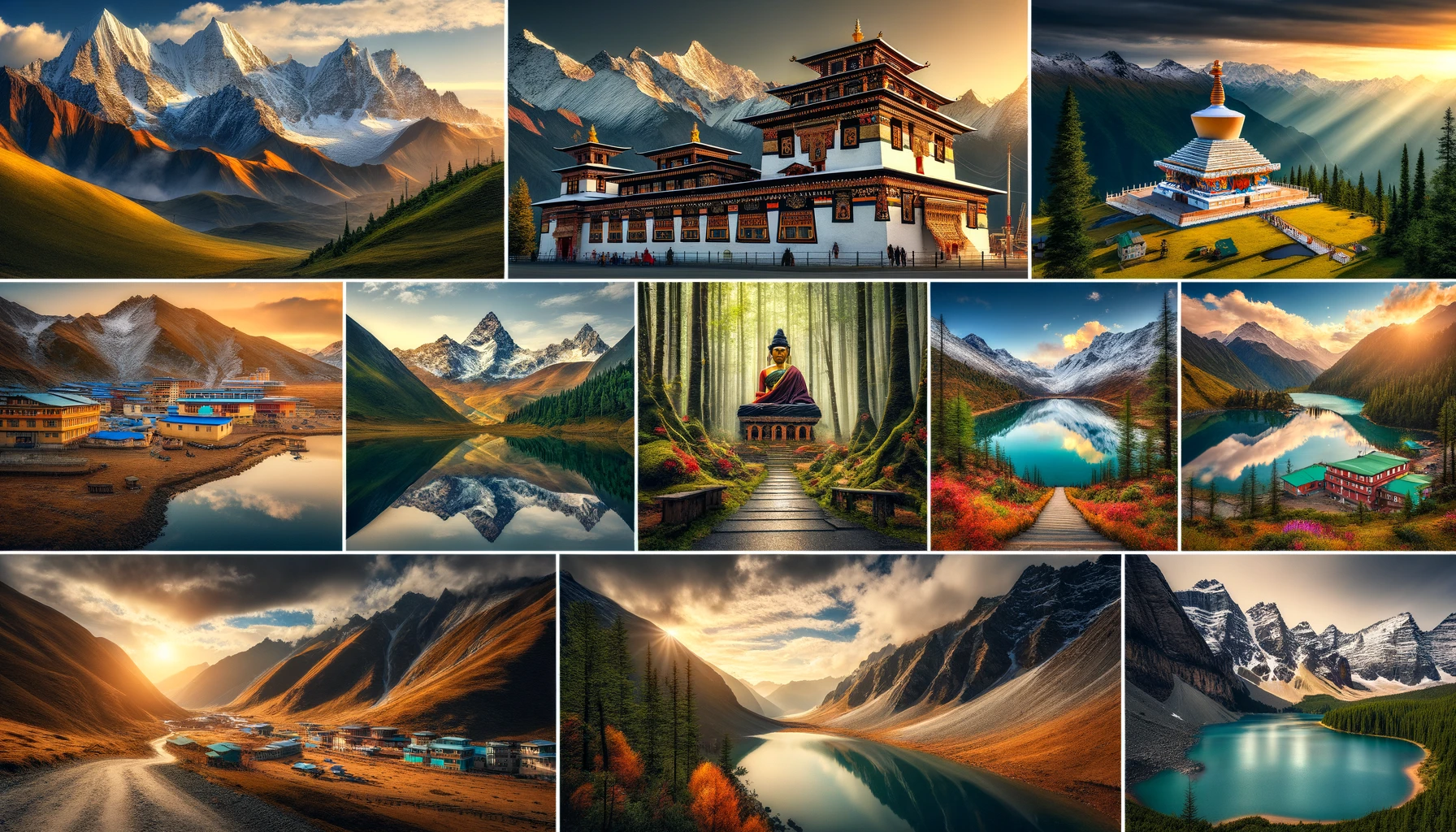
Tawang Monastery: The vibrant colors, detailed murals, and grand architecture make this a prime location for photography. Capture the daily life of monks, prayer ceremonies, and the intricate artistry of the monastery.
Sela Pass: Offering panoramic views of the Eastern Himalayas, Sela Pass is covered in snow for most of the year. The frozen Sela Lake nearby provides stunning reflections and a serene landscape for photographers.
Nuranang Falls: Known locally as Jung Falls, this is one of the most picturesque waterfalls in the region. The white water cascading down into a clear pool against a backdrop of dense vegetation is perfect for nature photography.
Bum La Pass: The rugged terrain and the distant mountain ranges offer dramatic landscapes. The area is also significant for its historical context, adding depth to any photographic work.
Madhuri Lake (Sangestar Tso): Renamed after the Bollywood actress Madhuri Dixit filmed here, the lake is surrounded by rugged mountains and has a mysterious charm, especially in the morning mist.
Tips for Capturing Tawang’s Landscapes and Cultural Events
1. Best Time for Photography: The golden hours—early morning and late afternoon—are ideal for capturing the soft, diffused light of Tawang’s landscapes.
2. Weather Considerations: Tawang’s weather can change rapidly. Be prepared with protective gear for your camera. Use the dynamic weather conditions to add drama to your photos, such as capturing clouds or fog.
3. Use Local Elements: Include local elements like prayer flags, monks in red robes, or traditional Monpa houses in your frame to provide a sense of place.
4. Long Exposures: Use long exposures for waterfalls or night skies. Tawang’s clear nights are excellent for astrophotography.
5. Respect the Culture: When photographing local people or religious ceremonies, always ask for permission. Be discreet and respectful, especially during solemn or private moments.
6. Gear Up: Considering Tawang’s varying altitudes and rugged terrain, carry lightweight and versatile camera equipment. A good zoom lens can be particularly useful for capturing distant landscapes or candid shots of wildlife.
7. Composition Techniques: Employ composition techniques like the rule of thirds or leading lines to create more engaging and balanced photos. The mountainous horizons and monastery architecture provide natural lines and focal points.
Day Trips from Tawang
Bum La Pass
- Description: Located near the China border, Bum La Pass is notable for its scenic beauty and historical significance as a pass through which Dalai Lama entered India. It’s at an elevation of about 15,200 feet and offers spectacular views of the Himalayan landscape.
- Travel Tip: Due to the altitude and rough terrain, it’s recommended to travel in a sturdy vehicle. Special permits are required, which can be arranged through travel agents in Tawang or sometimes through your hotel.
Madhuri Lake (Sangestar Tso)
- Description: This beautiful lake, renamed after the Bollywood actress Madhuri Dixit, was formed by an earthquake. It’s surrounded by rugged mountains and has a serene, picturesque setting perfect for relaxation and photography.
- Travel Tip: The road to Sangestar Tso can be rough, making it ideal for a day trip with a local driver who knows the area well.
Zemithang
- Description: A remote village that offers a glimpse into the pristine beauty and tranquility of Arunachal Pradesh. The area is known for its ancient stupa and bird watching opportunities, especially the rare Black-necked crane.
- Travel Tip: The drive is long but scenic, so start early to maximize your time in Zemithang and return before dark.
Organized Tours vs. Independent Travel Options
Organized Tours
- Pros:
- Convenience: Transportation and permits are often included, simplifying logistics.
- Informational: Guided tours provide insights into the history and culture of the area, which might be missed if traveling alone.
- Safety: Especially in remote areas or where navigation might be challenging, having an experienced guide can be safer.
- Cons:
- Cost: Generally more expensive than independent travel.
- Less Flexibility: Scheduled tours mean you’re bound to a set itinerary and timing.
Independent Travel
- Pros:
- Flexibility: Freedom to choose where and when you want to go, spending as much or as little time at each location.
- Cost-effective: Potentially cheaper, as you can choose budget-friendly options for transport and food.
- Cons:
- Logistics: Requires more planning, particularly for permits and understanding local travel conditions.
- Risks: Without local knowledge, you might miss out on understanding the full context of places or could face communication issues.
Emergency Information
Here’s a table outlining essential emergency information for travelers in Tawang, including contacts for hospitals, consulates, police stations, and services for roadside assistance and vehicle repairs:
| Category | Details |
|---|---|
| Hospitals | – Tawang District Hospital: Provides basic medical services and emergency care. |
| – KHADC Hospital: Located in nearby Bomdila, offers more comprehensive medical services. | |
| Police Stations | – Tawang Police Station: Main station for law enforcement and emergency assistance in the area. |
| – Jang Police Station: Another important contact, especially when traveling outside Tawang town. | |
| Consulates | – No foreign consulates in Tawang. Nearest are in Guwahati, consult your country’s embassy website for more information. |
| Roadside Assistance | – Local Mechanics: Available in Tawang town. It’s advisable to have contact numbers from your rental agency. |
| – Towing Services: Limited; usually arranged through vehicle rental agencies or local mechanics. | |
| Vehicle Repair Services | – Main Garage Tawang: Offers repairs and spare parts for common vehicle issues. |
| – Roadside Repair Shops: Scattered along major routes, capable of handling minor repairs. |
Tips for Handling Emergencies:
- Always have local emergency numbers handy.
- Inform your hotel or local contacts about your travel plans, especially if heading to remote areas.
- Carry a basic first-aid kit and know the basics of first aid.
- If renting a vehicle, ensure you have contact information for roadside assistance included in your rental agreement.
- Keep a list of essential phrases in Monpa or Hindi in case you need to communicate with locals during an emergency.